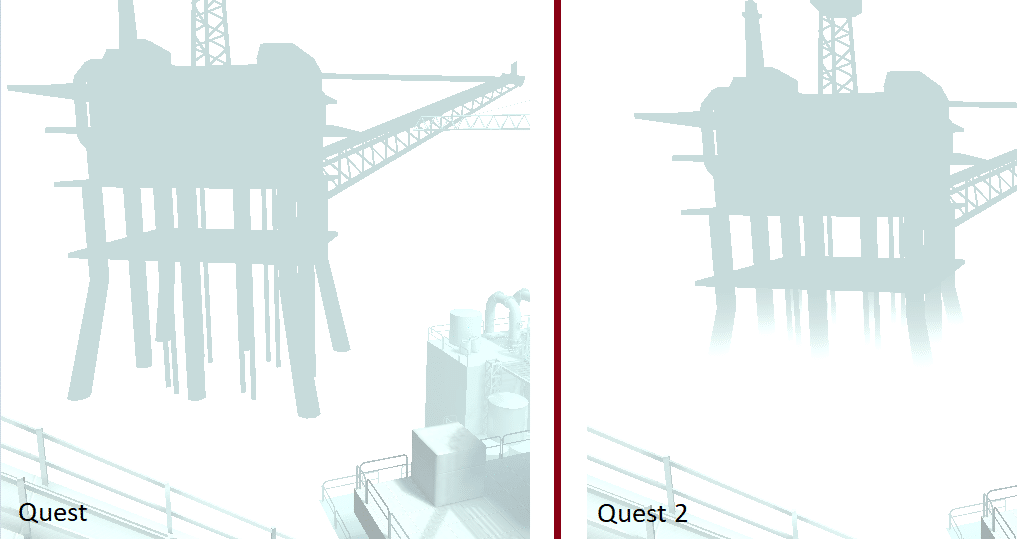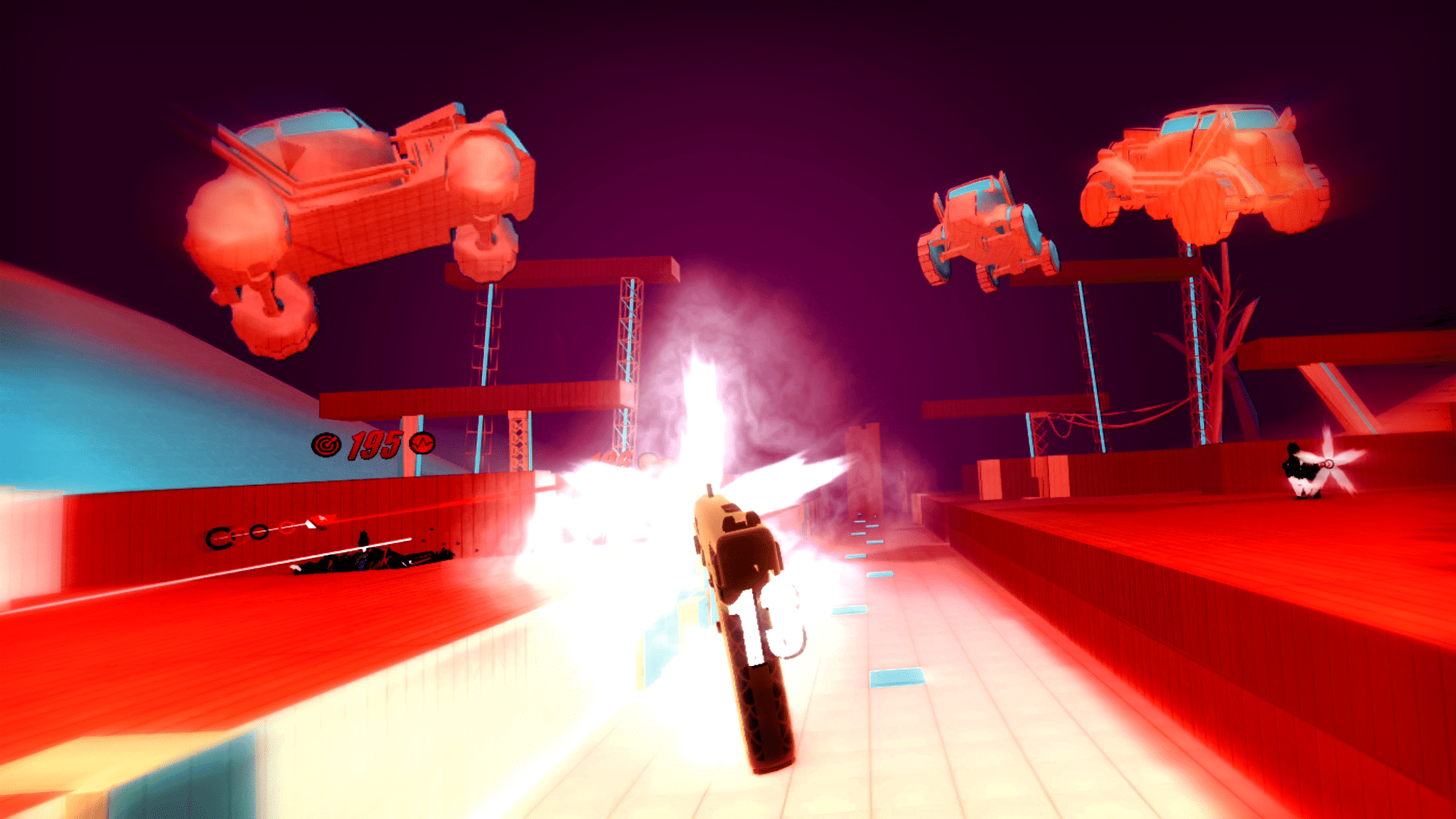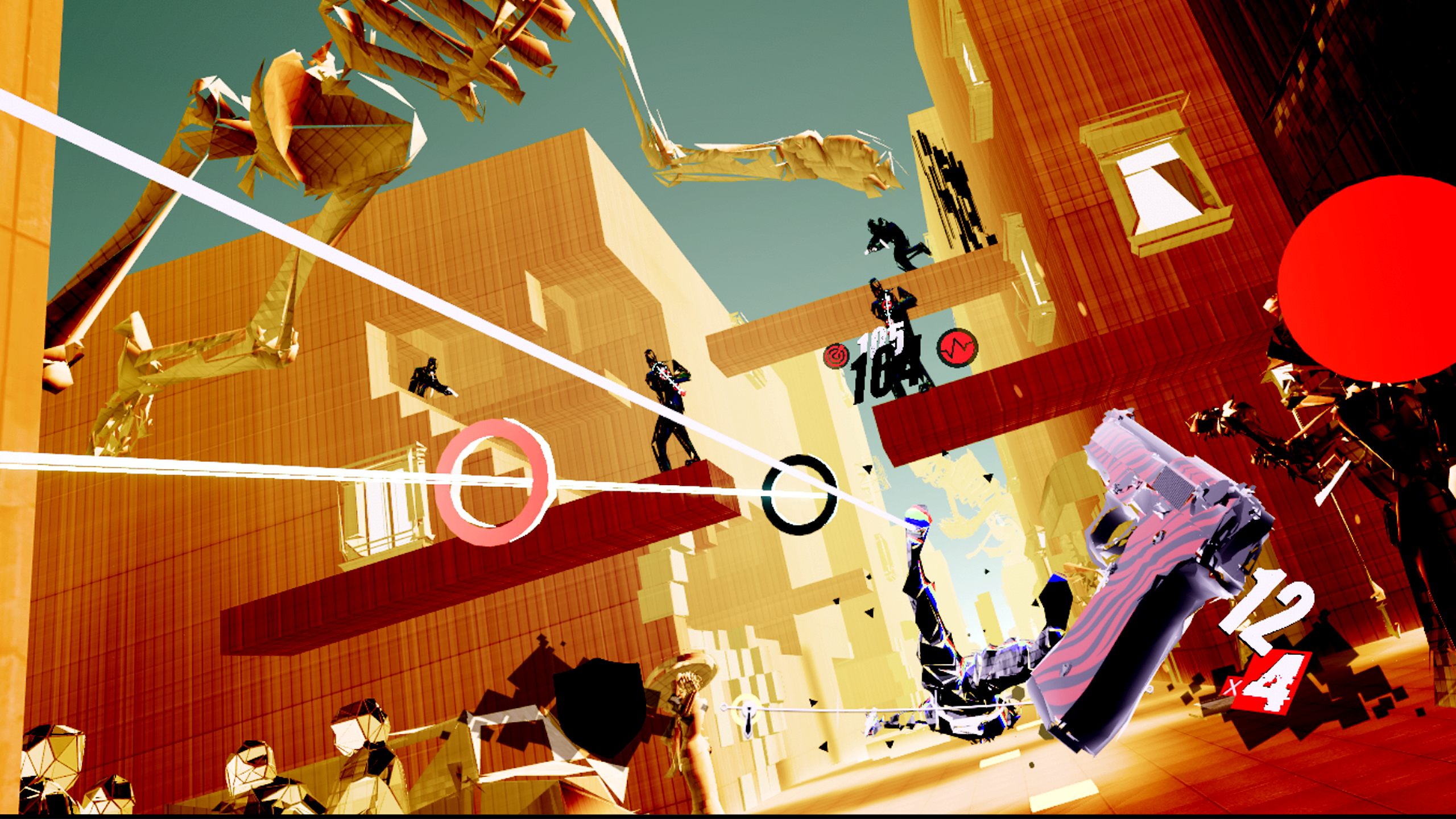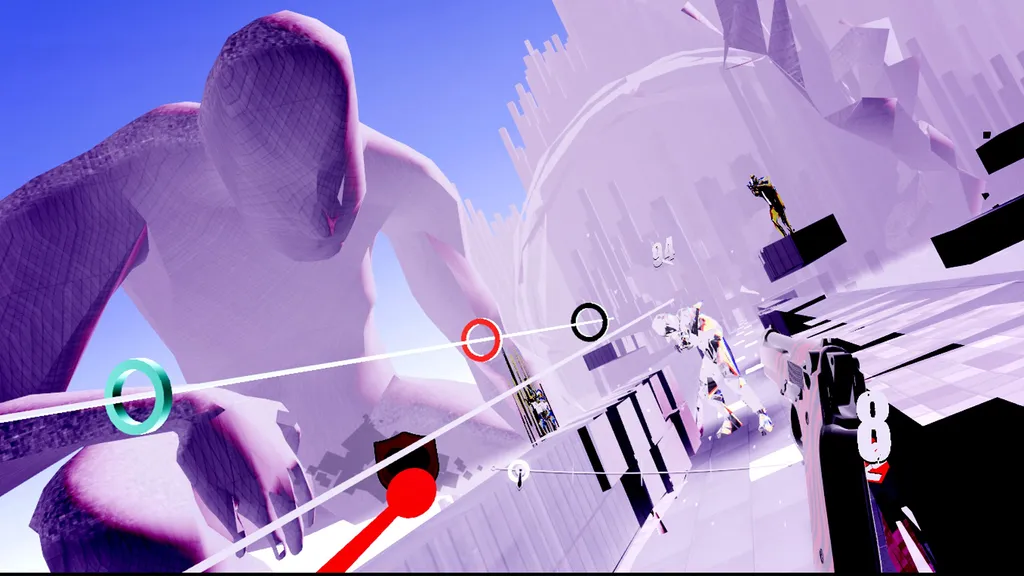We talk to the people behind Superhot and Pistol Whip on how Oculus’s latest headset, the Quest 2, allowed them to up their game and improve performance.
[UploadVR regularly commissions freelance writers to review products, write stories, and contribute op-ed pieces to the site. This article is a feature piece from an established journalist.]
When details of the Oculus Quest 2 were leaked, VR enthusiasts were ecstatic about one item in particular: the new headset would be more powerful. As the Qualcomm GPU behind the standalone went from the Snapdragon 835 to the Snapdragon XR2.
We now know from benchmarks that the Quest 2 GPU is more than twice as powerful than its predecessor. But what does that really mean for users? Developers have gone that extra mile to tap into that GPU power to improve the graphics of their games.
One of the first breakout titles for the original Quest was Superhot VR, a reimagining of the PC shooter for virtual reality. Many who played this version of the game found it to be more engrossing than the flat-screen version, with the motion controls in three-dimensional space enhancing the time-bending and bullet-dodging gameplay.
But the port from Oculus Rift to Quest was made with some tradeoffs. With the additional power of the Quest 2, developers Superhot Team were able to restore much of what was lost.
“We were able to add a lot of little things back in,” said Mark Schramm, Lead VR Developer at Superhot Team. “One example is the incredibly detailed concrete texture that was missing from all objects. This may not be something players would notice right away, and we joke a lot about it internally, but thanks to the higher resolution display of Quest 2 it was a super important addition for us. Other items include transparency effects, such as the ground fog that makes distant geometry blend much nicer into the scenery.”
Players on Quest 2 will now find a Superhot game that has more polish and more shininess than before. There is a texture to the objects of the world and improved lighting. The red crystalline enemies gleam in ways they did not before. And the backgrounds are closer to the original, with art fading in the fog to make everything feel suitably disembodied.

Superhot for Quest 2 seems to be proof that despite the drop in power from a PC to a standalone headset, a game could look just as good, giving users the full experience the developer intended.
“Quest 2’s chip is quite a beast and we were pleasantly surprised at how far we can push it. As we become more familiar with the hardware, I am certain we will be able to do even more cool things with it, and we’re continuing to work on it,” said Schramm.
The fore-mentioned increase in screen resolution, from Quest 1’s 1440 by 1600 per eye to Quest 2’s 1832 by 1920 per eye, was one way Superhot Team was able to utilize the hardware. Luckily, their game had support baked in.
Schramm said, “Many of our in-game materials are procedurally generated, which meant we were able to make great use of Quest 2’s higher resolution display. Our complex materials such as the crystal and concrete have used texture slots in the past. As an example, this would include textures for any grout lines in the floor tiles, reflections inside the crystal or the scan line stripes.”
“For Quest, we changed to a procedural system where many of these features are calculated via code, rather than loaded in from a texture. This meant two things: The materials use less texture memory, which can be a limited resource on mobile GPUs in general. And we can easily scale these features when eye buffer resolution increases. In practical terms, this means we do not need to author two different texture sets (one for Quest 1 and another one for Quest 2 resolutions), but also that our materials are as sharp as they possibly can be. This was super important for us, since we want to always maintain that clean, crisp Superhot look.”
On the opposite side of the gun barrel is Pistol Whip, the quick-paced counterpart to the slow gunplay of Superhot. This rhythm-based shooter that feels like an amalgam of Beat Saber’s music and the bullet action of the arcade games of yesteryear was an already colorful game, but Cloudhead made it prettier. Bringing back lighting and other graphical effects that are found on the PC version, Pistol Whip feels more surreal, more glossy, thus more like itself than before.
“The thing we were most excited about was having the chance to push the boundaries of visual elements in the game. One of our goals is to make sure the game always looks amazing on all platforms, from Quest to PCVR, so the team is always working on solutions to see the visuals getting close to the high end platform. The Quest 2 gave us the opportunity to push this further,” said Ed Lago, Senior producer at Cloudhead Games.
Once the Quest 2 was in their hands, Cloudhead knew they had to restore much of what was previously missing from the Quest version. Fortunately, Pistol Whip was always evolving, receiving a steady stream of new songs and accompanying levels, wrapped in a metaphor of films playing at a movie theater.
Lago said, “We were in the middle of the ‘Heartbreaker Trilogy’ production when we decided to update the game for Quest 2. This new content was really different from the previous updates, way more colorful, more heavy on sfx’s and new shaders we wanted to implement in the game, it was the perfect time to take advantage of Quest 2’s higher specs so the visuals would look amazing in the new headset. “
The lighting and effect improvements demonstrate how much this level of polish can bring a game to life. Some Quest games had a tendency, while still having wonderful characters, objects, and worlds, to feel flat. Lighting was not dynamic. Scenes were simple. This was what the Quest 1 GPU could, and that was with aid of Fixed Foveated Rendering (FFR), where software lowers the resolution of the picture on the edges of the screen, reducing the load on the GPU.
The Quest 2 does not suffer from a limited GPU and the resulting flat graphics. With lights, shadows, and other flashy effects now possible, games like Pistol Whip feel more present and less like simple throwbacks.

“We always wanted to have PC and Quest versions as close as possible in terms of visuals, but due to original Quest’s limitations we had to sacrifice some features such as realtime shadows and bloom. Fixed Foveated Rendering is also used on Quest to save some GPU time. So, the first thing we thought when we got a Quest 2 was ‘what if we turn everything on?’ Then we tried and the results were super impressive.
We were able to keep acceptable framerates with real-time shadows enabled and FFR disabled, which is great. With FFR disabled, we were also able to match the dithering effect (during scene transitions or when damage is received) quality in PC and Quest 2 platforms. We’re now working towards bloom and evaluating other visuals,” said Teo Dutra, Graphics Engineer at Cloudhead.
And these are not the only improvements for these titles. There are more to come. Cloudhead will continue to tweak and improve things, as they continue to add new songs to the game.
Detra said, “With each new update, we are constantly improving visuals and the performance of the game. Platform parity is a conversation we have frequently and the Quest 2 brings us incredibly close to the PC version of Pistol Whip. We are now able to use the same shaders, shadows, VFX, and resolutions as PC, and in the future we hope to work towards hitting 90fps.”
Superhot Team will also provide that significant jump in presentation to match the PC version, just as soon as Oculus brings the promised support for it: the increase in framerate from 72 frames per second to 90.
Schramm said, “Since the game has many very bright scenes, running at 90HZ reduces the perceived flicker in the peripheral vision, which is one of the main complaints, and the reason we added a screen-dimming option to the Quest version. 90fps also makes the game buttery smooth to play, not only in fast, action heavy moments, but especially in scenes where players move slowly and deliberately. It heightens the experience and makes it so much more visceral.”
And these two games are not the only ones to get new life on this new headset. We have seen the improvements in VR mainstays like Arizona Sunshine and newer titles like Onward. And we will likely see even more as developers take the time to upgrade their games, or just make new ones that can utilize the power of Quest 2.

“Oculus has put tremendous effort into making developers’ lives easier, both with technical support and tools support,” said Dutra. “It feels like we’ve crossed a threshold into the future, where mobile VR is finally encroaching on console and PCVR. The future of VR has never been brighter.”























